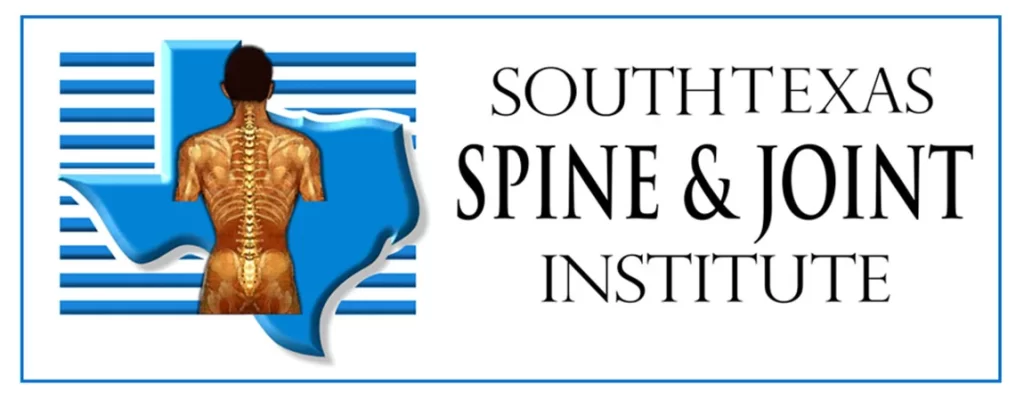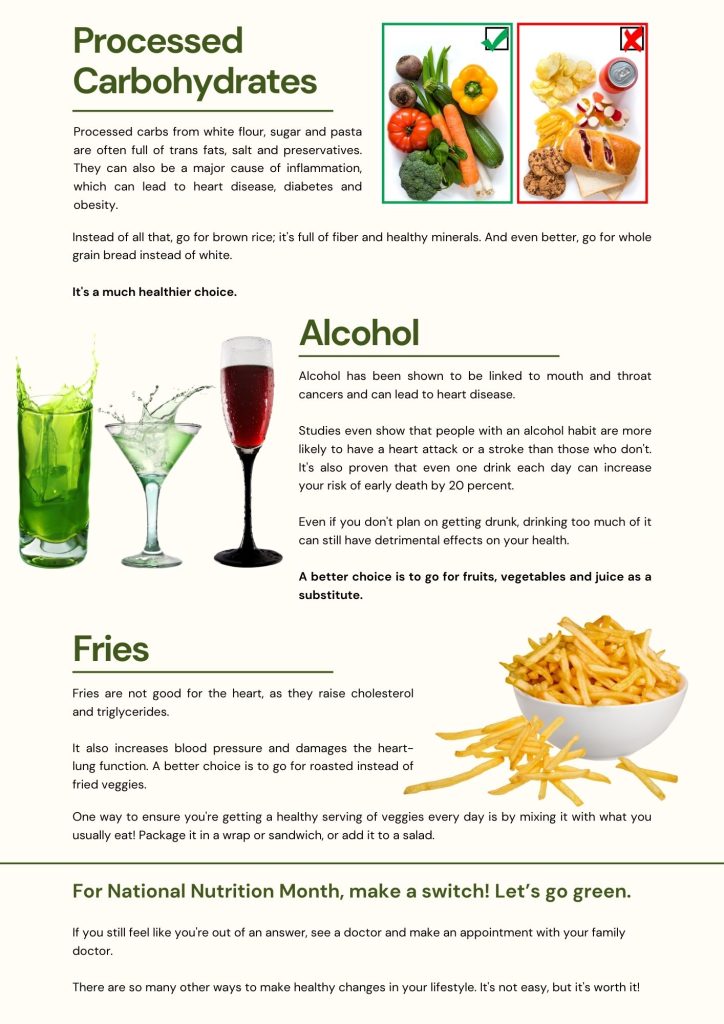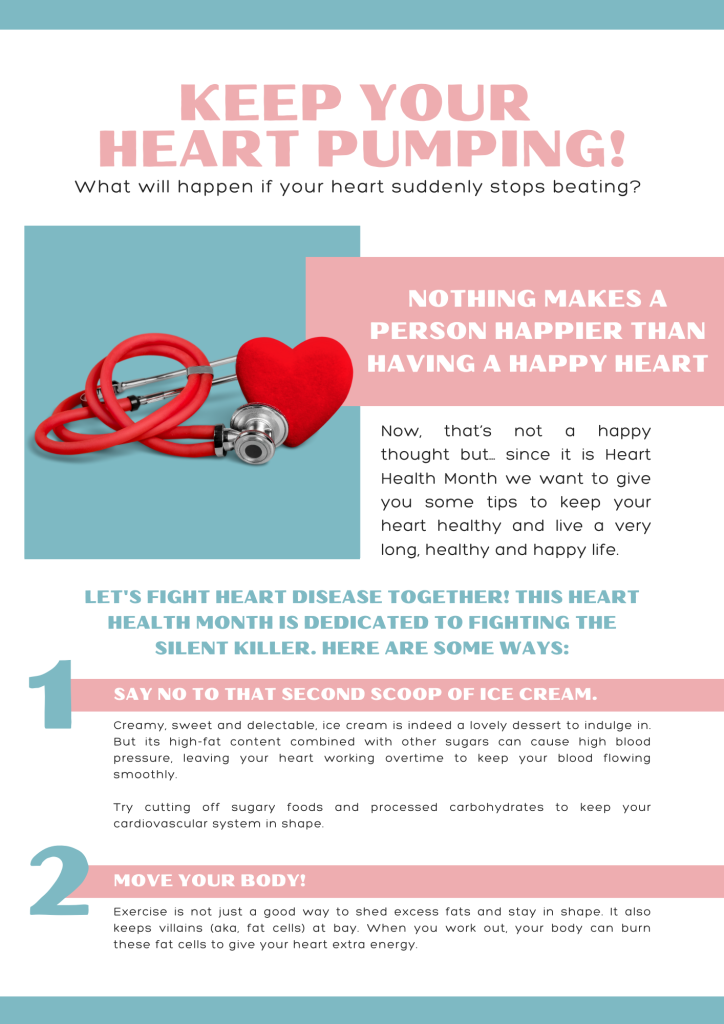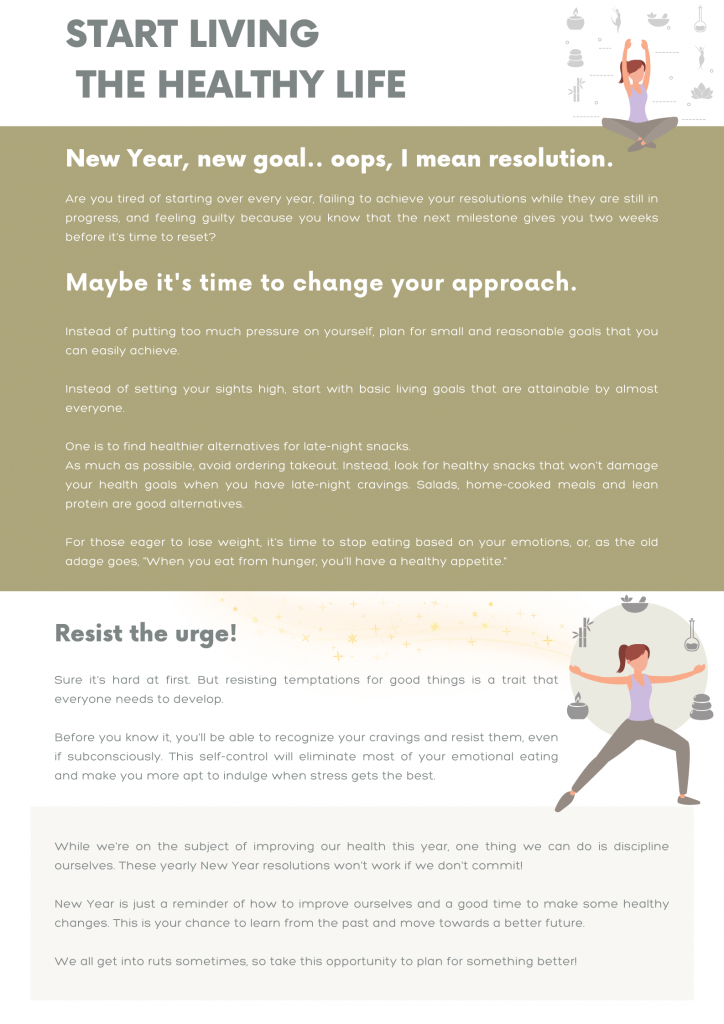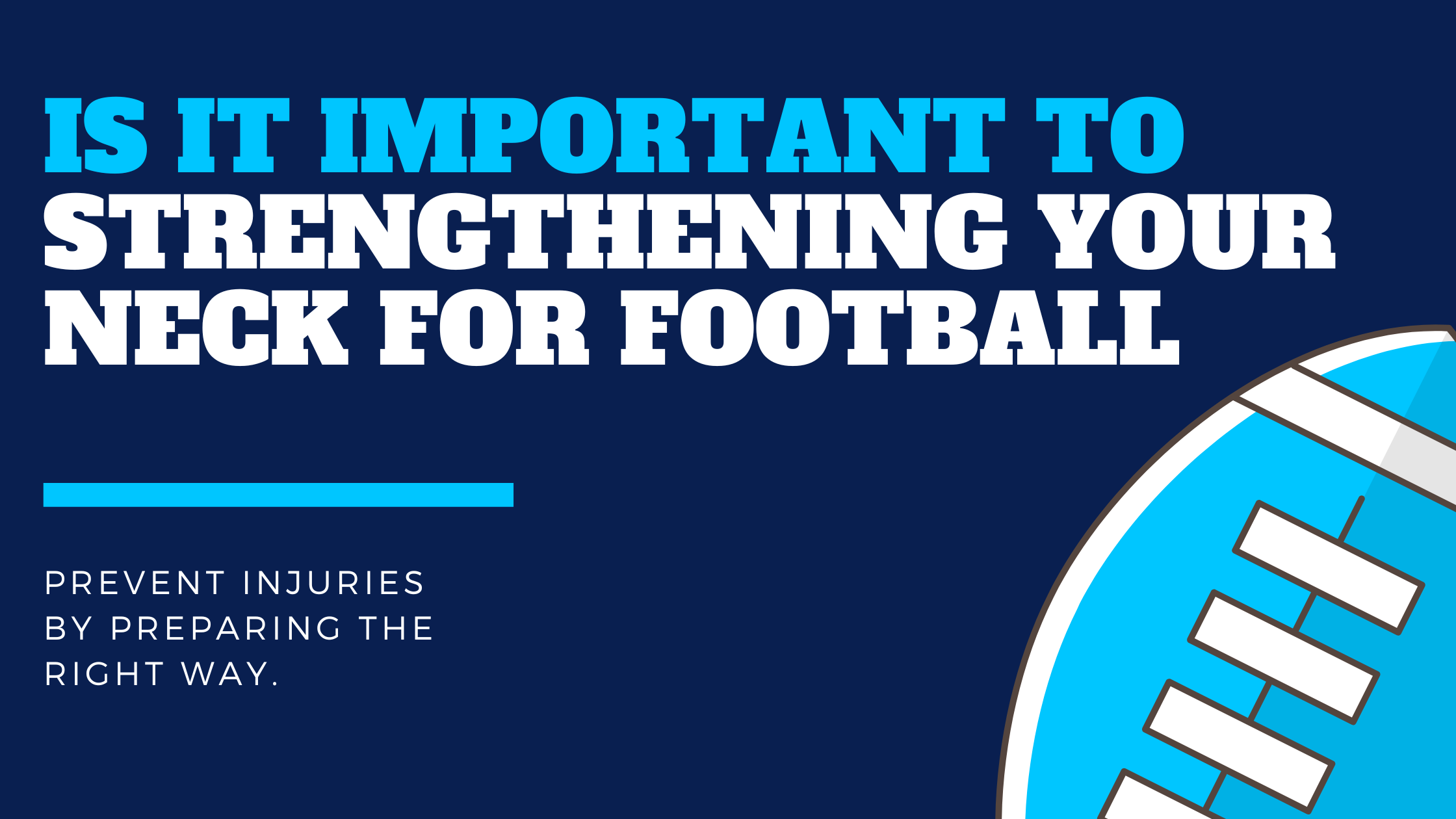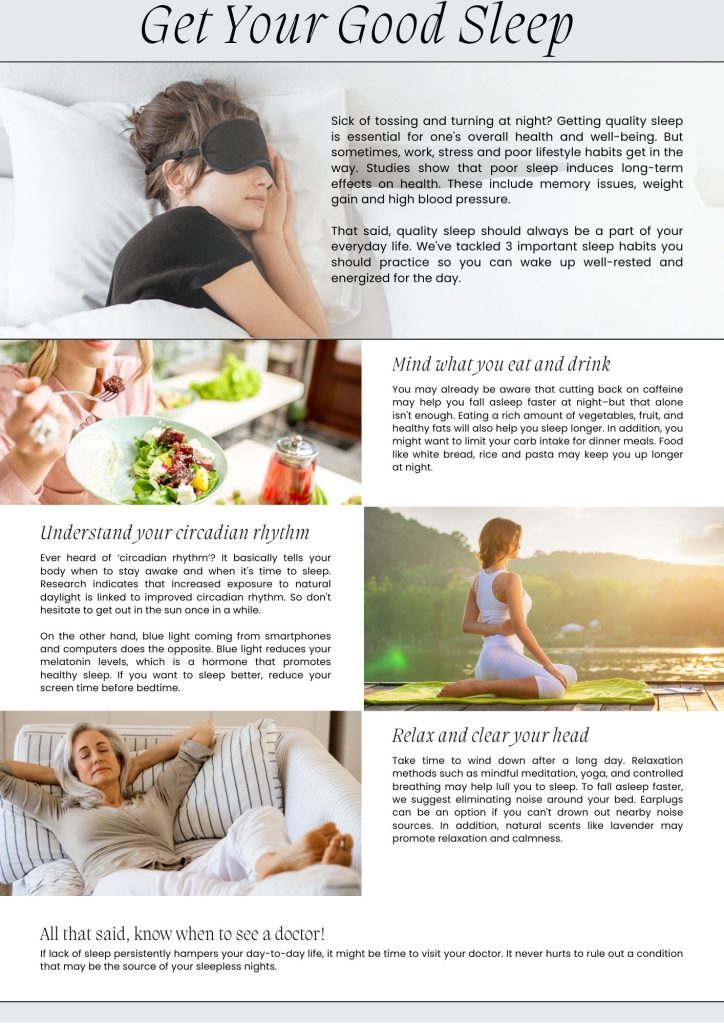
3 Habits That’ll Get You Good Sleep
Sick of tossing and turning at night? Getting quality sleep is essential for one’s overall health and well-being. But sometimes, work, stress and poor lifestyle habits get in the way. Studies show that poor sleep induces long-term effects on health. These include memory issues, weight gain and high blood pressure.
That said, quality sleep should always be a part of your everyday life. We’ve tackled 3 important sleep habits you should practice so you can wake up well-rested and energized for the day.
- Mind what you eat and drink
You may already be aware that cutting back on caffeine may help you fall asleep faster at night–but that alone isn’t enough. Eating a rich amount of vegetables, fruit, and healthy fats will also help you sleep longer. In addition, you might want to limit your carb intake for dinner meals. Food like white bread, rice and pasta may keep you up longer at night.
- Understand your circadian rhythm
Ever heard of ‘circadian rhythm’? It basically tells your body when to stay awake and when it’s time to sleep. Research indicates that increased exposure to natural daylight is linked to improved circadian rhythm. So don’t hesitate to get out in the sun once in a while.
On the other hand, blue light coming from smartphones and computers does the opposite. Blue light reduces your melatonin levels, which is a hormone that promotes healthy sleep. If you want to sleep better, reduce your screen time before bedtime.
- Relax and clear your head
Take time to wind down after a long day. Relaxation methods such as mindful meditation, yoga, and controlled breathing may help lull you to sleep. To fall asleep faster, we suggest eliminating noise around your bed. Earplugs can be an option if you can’t drown out nearby noise sources. In addition, natural scents like lavender may promote relaxation and calmness.
.
All that said, know when to see a chiropractor!
If lack of sleep persistently hampers your day-to-day life, it might be time to visit your doctor. It never hurts to rule out a condition that may be the source of your sleepless nights.
Eat Your Greens
Insanely Easy Way To Add Years To Life: Eat Your Greens
Here comes March, and in the blink of an eye, it’s already National Nutrition Month!
It’s the best time to revisit our eating routine. We’ve been busy with all sorts of things, enjoying the warm weather and waiting for spring (or summer), but when it comes to eating, we tend to lose focus.
But come to think of it, the recent global health crisis is a call — stop patronizing convenience products and go back to basics. That is, eat your greens and ditch these five “killers” foods, which have been on our plates year-round.
1. Diet Drinks
Oh, what’s a holiday without some diet Coke or Pepsi, right? Soda is a no-no and has been known to contribute to obesity, tooth decay, cancer and diabetes. Sure, it’ll taste sweet at first, but it’s only the beginning of your headaches that will come thereafter.
Here’s why it’s a no-no: It washes away nutrients from our bodies, causing deficiency and unhealthy weight gain.
It’s also an easy “off the shelf” source of calories, followed by the high sugar content.
2. Fast Foods
That crispy fried chicken, beef stroganoff and chicken wings are part of your feast, but are they healthy? Not really. Fast food is high in calories and low in nutrition, with zero fiber and fat.
It’s why it’s better to go for salad or vegetables instead.
3. Processed Carbohydrates
After a long tiring day, who wouldn’t be happy to go home and munch on some chips on the sofa? Or when we’re finished with work, who’s going to pass up on that pizza?
But what we often forget is that too much of a good thing isn’t always a good thing. And while pizza and chips seem like the go-to choices in kick-back meals with family and friends, it’s not the healthiest.
Going home with brownies or pasta? Yes, we all are guilty of it, but deep inside, you know you’re doing your body an injustice.
Processed carbs from white flour, sugar and pasta are often full of trans fats, salt and preservatives. They can also be a major cause of inflammation, which can lead to heart disease, diabetes and obesity.
Instead of all that, go for brown rice; it’s full of fiber and healthy minerals. And even better, go for whole grain bread instead of white.
It’s a much healthier choice.
4. Alcohol
Bottoms up! Cheers to that great job offer or the warm weather and a cold beer — just what we needed in this heat. But wait a minute, doesn’t alcohol mean you get to sit back and unwind? Well, not always.
Alcohol has been shown to be linked to mouth and throat cancers and can lead to heart disease.
Studies even show that people with an alcohol habit are more likely to have a heart attack or a stroke than those who don’t. It’s also proven that even one drink each day can increase your risk of early death by 20 percent.
Even if you don’t plan on getting drunk, drinking too much of it can still have detrimental effects on your health.
A better choice is to go for fruits, vegetables and juice as a substitute.
5. Fries
We are not trying to say that fries are not good — they are! But only in moderation.
We all love the greasy, salty and crispy goodness of a french fry, but we often forget that eating too much isn’t good.
Fries are not good for the heart, as they raise cholesterol and triglycerides.
It also increases blood pressure and damages the heart-lung function. A better choice is to go for roasted instead of fried veggies.
One way to ensure you’re getting a healthy serving of veggies every day is by mixing it with what you usually eat! Package it in a wrap or sandwich, or add it to a salad.
For National Nutrition Month, make a switch! Let’s go green.
If you still feel like you’re out of an answer, see a doctor and make an appointment with your family doctor.
There are so many other ways to make healthy changes in your lifestyle. It’s not easy, but it’s worth it!
Keep Your Heart Pumping!
Love Your Heart: Keep It Pumping
What would happen if your heart suddenly stops beating?
Now, that’s not a happy thought but… since it is Heart Health Month we want to give you some tips to keep your heart healthy and live a very long, healthy and happy life.
Let’s fight heart disease together! This Heart Health Month is dedicated to fighting the silent killer. Here are some ways:
1 – Say no to that second scoop of ice cream.
Creamy, sweet and delectable, ice cream is indeed a lovely dessert to indulge in. But its high-fat content combined with other sugars can cause high blood pressure, leaving your heart working overtime to keep your blood flowing smoothly.
Try cutting off sugary foods and processed carbohydrates to keep your cardiovascular system in shape.
2 – Move your body!
Exercise is not just a good way to shed excess fats and stay in shape. It also keeps villains (aka, fat cells) at bay. When you work out, your body can burn these fat cells to give your heart extra energy.
3 – Oxygenate yourself.
Staying hydrated will make your heart work less. Water is not just a liquid that quenches thirst, and it also relieves strain on the cardiovascular system.
4 – Avoid stress.
Stress can lead to heart disease, high blood pressure, and other deadly diseases.
5 – Take good care of yourself.
Don’t take anything for granted. Pay close attention to your health and do regular checks on your heart’s condition.
Heart Health Month aims to raise public awareness about the importance of keeping their hearts alive and kicking!
Let’s keep it pumping, fellas!
Start Living The Healthy Life
New Year, New You: Doable Healthy Tips to Achieve Your Best Version
If there’s one thing that the global pandemic taught us, it’s never to take our well-being for granted. With 2022 being a year of unprecedented change and challenge, it’s time to start 2023 on the right foot!
Why not make one simple change this New Year that could benefit your health? It doesn’t have to be anything drastic like giving up all your cravings (ahem, sugar) or running a marathon – small changes can go a long way!
Say no to the late-night snacks.
Instead of reaching for chips and dip, why not opt for something healthier like carrots and hummus? If you’re really craving something sweet, add a little bit of dark chocolate to your snack – it’s packed full of antioxidants!
Forget the snooze button.
Admit it or not, we all hit the snooze button at least once (or twice) in the morning. Instead of getting an extra few minutes of sleep, try to get up at your designated time and use those extra minutes for physical activity.
It doesn’t have to be a workout – simply walking outside can help you feel refreshed and energized!
Take it slow with sugary drinks.
Oh, the temptation. Do you really need that extra frappuccino? Instead of giving in to temptation, try to replace sugary drinks with water or unsweetened tea.
If you still need something extra, why not make your own fruit smoothie? With all the fresh fruits available in the market, it’s easy to make something healthy and delicious!
Always take a break from prolonged sitting/standing.
One of the biggest challenges of our modern lifestyle is that most of us are stuck in front of a computer all day.
Meetings and Deadlines and Paperwork and even Endless emails.
It’s no wonder our bodies can feel strained from all the sitting and standing! Too much of anything can be bad for us, and that includes being inactive.
Remember to take regular breaks throughout the day to move your body – even a simple stretching or brisk walk around the block can help!
Water therapy always helps!
Stop buying those expensive energy drinks and get yourself a good old-fashioned glass of water. Not only is it healthier, but it can also help to flush out toxins and promote better circulation throughout the body.
You don’t need to gulp down pints of water all day – try drinking one glass eight times a day for starters and gradually increase the amount as you go!
Don’t forget to indulge.
If you’re trying to lead a healthier lifestyle, it doesn’t mean that you have to swear off unhealthy treats completely – sometimes it’s OK to indulge! Just make sure that your indulgences are part of your overall healthy food plan, and don’t go overboard with them.
Life was pretty tough last year, so why not shake off the negativity and smile by following some of these easy New Year, New You tips? It might help you make your biggest resolution a reality!
Strong neck vital for football
Whether it’s the first ever game of your young athlete’s career or the last game of the season, it’s more than essential to ensure they’re ready for action. An athlete’s neck, which is an important yet most ignored body part, should be strengthened before participation in football and even in soccer to avoid potential injuries.
Research has shown that strengthening the neck can:
– Prevent injuries that may occur during contact sports such as football
– Results in an overall increase in speed, agility and strength
– Improve balance, one of the key components of being a successful football player
Through some research we’ve found here are a few neck strengthening exercises that will benefit the student athlete:
1. Cervical Slides
Football requires a lot of bending and twisting of the neck especially during tackline. You can help your child achieve a better posture and a firmer neck with cervical slides.
How to do it?
Stand with your feet shoulder-width apart. Now, bend your neck and slowly move your chin downward until you feel the stretch on the back of your neck. Next, tuck your chin to your chest and slowly move your head back up. Repeat this in one minute.
Reminder: Always keep your chin tucked in to avoid straining your neck.
For better execution, watch this video tutorial: https://www.nfl.com/news/get-ahead-of-the-game-with-these-neck-exercises-0ap3000000602977
2. Dumbbell Front Raises
If you want to enhance shoulder mobility and tone your upper body to take on the forces during tackling or being tackled, dumbbell front raises are your go-to exercise. It also helps strengthen your upper back and the muscles of your neck.
How to do it?
Stand straight with your feet shoulder-width apart. Swing your arms back and touch the dumbbells to your upper chest. Slowly lower them back to the starting position. Repeat for 10 to 20 reps.
Pro tip: Avoid swinging the dumbbells too fast. This can put a lot of pressure on your neck.
Learn how to do it properly here: https://www.youtube.com/watch?v=yXSoDQ7SgTk
3. Dumbbell Shrugs
Usually, this exercise is done with a barbell, but you can also do it with dumbbells.
By practicing shrugs, you’re developing your upper body’s muscles and strengthening your neck. This can even help improve power in the shoulder and elbow joints. In addition, it will allow you to hold your head high, protecting your neck from unnecessary stresses caused by a forward posture.
How to do it?
Stand with your feet slightly apart, knees slightly bent and dumbbells raised above your head. Shrug your shoulders up and down while keeping your arms straight. Repeat for 10-20 reps.
Note: Make sure you don’t raise your shoulders higher than your ears. Go only as high as your shoulder joints allow.
This video tutorial will teach you how to do the shrug properly: https://www.youtube.com/watch?v=llSrlpd7TEE
Better Safe than Sorry
Injuries can happen anytime, so it’s essential to better understand the potential risks that can be caused by injuries and how much time you should dedicate to preventing them from happening.
If you want your child to stay healthy and avoid injuries, take these exercises seriously to help strengthen their neck so they can play at their optimal capacity.
Need help in prepping your young football superstar before the game?
Let us handle that for you. From the pre-game warmup to the post-game cooldown, we’ll ensure that your child is ready to take action when the whistle blows. So contact us today, and let us get you started!
Understanding Carpal Tunnel Syndrome
Do you know that putting strain on your hand or wrist which causes that feeling of numbness or tingling may lead to something serious?
The first clinical practice about this hand nerve weakness diagnosis was in 1854 when most patients presented themselves with motor and sensory complaints in the median nerve distribution of their hands. Then, in 1938, ‘Carpal Tunnel Syndrome (CTS)’ was the term coined by Moersch.
Today, the prevalence of CTS in general population reports ranges from 1% to 10%.
What is ‘Carpal Tunnel Syndrome or CTS’
Carpal Tunnel Syndrome (CTS), also known as median nerve compression, is a condition that causes numbness, tingling, and weakness in your hand.
It happens when a person puts pressure on his median nerve, which runs the length of the arm and then goes through a passage in the wrist called the carpal tunnel, and ends in the hand. Because the median controls the movement and feeling of his thumb and fingers except not typically the pinky finger.
The most common causes of CTS are the burning sensation, tingling, or itching numbness in your hand, weakening feeling when you hold objects, the shock-like sense that moves into your fingers, or that tingling discomfort that moves up to your arm.
One example is when you wake up in the morning and suddenly you feel that numbness and tingling on your shoulder down to your hand. During the day, these symptoms might flare up and distract you from doing your usual activities and routine. In the early times, shaking your hands may ease that sensation, but in some cases, the numbness may not subside or go away.
CTS Risk Factors, Treatment, and Prevention
According to studies, CTS is mostly seen in women. As women have smaller carpal tunnels than men, so they are three times more likely to get it. Also, there are much higher risks for a family member with carpal tunnels, the nature of your job, and often if you experience a fracture or dislocated wrist.
Some diagnoses and test procedures are available like tapping the palm side of your wrist called the Tinel Sign test, or fully flexing the wrist with your arms extended. For doctors to examine your bones and tissues more, imaging tests such as X-rays, ultrasounds, and MRI exams are applicable. Also, electromyogram or nerve conduction studies are the next steps to further examine this condition.
CTS treatment will depend on your symptoms, condition, and progress. With that, you might need to change your lifestyle, exercise more often, immobilization, anti-inflammatory drugs or steroid medication, or have surgery.
Other than that, you may start to keep your wrists straight at all times, use a splint or brace, keep your hands warm, put your hands or wrist in proper position while you work, and take breaks whenever possible.
Ctto: https://pin.it/65IaNbL
Therefore, the early treatments for Carpal Tunnel Syndrome are highly recommended with physical therapy, and a change of lifestyle can help to significant long-term improvement and eliminate its symptoms. While untreated CTS can lead to permanent nerve damage, disability, and loss of hand function.
We are here for you if you need help with CTS – we are just a phone call away.
